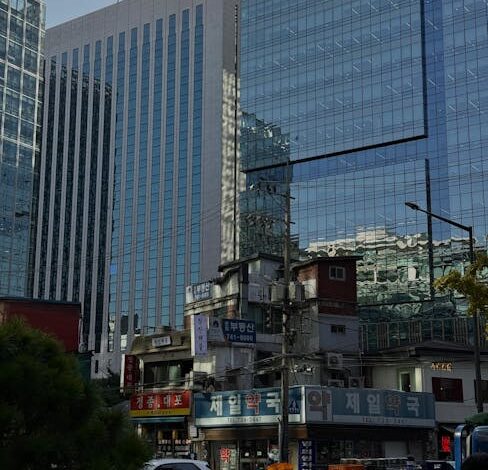The Unexpected Fallout of a Corporate Standoff

There are certain immutable laws in life. The sun rises in the east, gravity keeps us grounded, and at 7:00 PM EST, I settle in for my daily dose of trivia and mental gymnastics. Or at least, that used to be the case. For nearly two weeks now, my carefully constructed evening ritual, a comforting anchor in an otherwise unpredictable world, has been utterly shattered. The culprit? A corporate standoff between YouTube TV and Disney, which has culminated in a Disney blackout. And yes, I know what you’re thinking, “First-world problems!” And you’d be right. But when those problems directly impact your ability to watch ‘Jeopardy!’, suddenly, things feel a little more… life-altering.
It’s not just about the game show, of course. It’s about the principle, the unexpected disruption, and the stark reminder that even our seemingly stable digital subscriptions are at the mercy of powerful companies haggling over invisible contracts. This isn’t just a minor inconvenience; for many, it’s a genuine headache, and for me, it’s an empty slot where Alex Trebek (and now Ken Jennings or Mayim Bialik) once stood.
The Unexpected Fallout of a Corporate Standoff
The saga began, as these things often do, with a terse notification. YouTube TV subscribers received an email warning of a potential disruption. Google, YouTube TV’s parent company, and Disney, the conglomerate behind an empire of channels, had failed to reach an agreement on a new streaming deal. When the clock struck midnight, the channels went dark.
Suddenly, the entire Disney suite — ABC, ESPN, FX, National Geographic, Freeform, Disney Channel, and yes, my beloved local ABC affiliate that carries ‘Jeopardy!’ — vanished. Poof. Gone. Just like that, users who had diligently paid their monthly subscription found themselves staring at empty grids where their favorite shows used to be.
For me, the initial shock wasn’t just about missing shows; it was the sudden feeling of helplessness. Here I was, a paying customer, caught squarely in the crossfire of two titans battling over carriage fees and distribution rights. It felt personal, even though I knew it was pure business. My daily routine, a small but significant part of my day, was collateral damage in a boardroom negotiation.
This isn’t just about losing access to a few channels; it’s about the erosion of trust and the reminder that the content we stream isn’t truly “ours.” It’s leased, licensed, and subject to the whims of corporate agreements that rarely, if ever, prioritize the end-user experience.
More Than Just Missing Shows: The Ripple Effect
While my personal anguish over ‘Jeopardy!’ might sound trivial, it’s indicative of a broader problem. When channels disappear, it’s not just about entertainment; it’s about habits, comfort, and even news. For sports fans, losing ESPN during a critical season is devastating. For parents, a lack of Disney Channel can turn peaceful evenings into a scramble for alternative distractions.
My ‘Jeopardy!’ ritual is more than just watching a game show. It’s a moment of quiet reflection, a chance to learn something new, and a comforting constant in a chaotic world. It’s a low-stakes intellectual challenge that I share with millions of others. To have that taken away so abruptly, through no fault of my own, feels like a small but significant violation of my digital comfort zone.
The Search for Alternatives (and the Frustration)
The immediate aftermath of a blackout like this sends users scrambling. What do you do? Do you switch to another live TV streaming service? Do you sign up for multiple app-specific subscriptions? Do you dust off that old antenna you haven’t used since the analog days?
For a brief period, YouTube TV offered a $15 discount as an apology, but that hardly solves the problem of missing content. Many, like me, found themselves exploring free trials of competing services, only to realize the complexity and cost involved in duplicating their original lineup. Others considered buying a digital antenna, a piece of hardware that feels like a step backward in the age of streaming convenience.
The irony isn’t lost on anyone: we cut the cord for flexibility and choice, only to find ourselves entangled in new, equally frustrating digital bundles and corporate squabbles. The promise of “a la carte” television feels further away than ever when even major platforms can’t maintain their existing channel lineups.
Who Wins When Everyone Loses? Unpacking the Business Side
From a purely business perspective, these blackouts are a game of high-stakes chicken. Disney wants higher carriage fees for its valuable content. Google wants to keep its subscription costs competitive for YouTube TV. Both are leveraging their positions, hoping the other will blink first. The consumer, unfortunately, is merely a bargaining chip.
Disney knows its content is popular and drives subscriptions. Google knows that subscribers will churn if too many popular channels are missing. The problem is, when neither side is willing to budge, it’s the subscriber who pays the price, both literally and figuratively.
These disputes also highlight the increasingly complex landscape of content ownership and distribution. As more companies launch their own streaming services (Disney+ being a prime example), the incentive to license content to competitors at favorable rates diminishes. Everyone wants a bigger slice of the pie, and traditional bundling models are under immense pressure.
The Future of Streaming: A Fragmented Landscape?
Incidents like the YouTube TV-Disney blackout raise crucial questions about the future of streaming. Are we headed towards an even more fragmented landscape where consumers need to subscribe to a dozen different services to get all their desired content? Will these blackouts become more frequent as contract renewals become battlegrounds?
The dream of a simplified, cheaper alternative to cable is slowly being eroded by these ongoing conflicts. What started as a liberating choice is beginning to feel like a new, more complicated form of the old problem. Consumers are tired of being caught in the middle, and eventually, this constant disruption might lead to subscription fatigue or a return to more traditional (and perhaps more reliable) viewing methods.
Still No ‘Jeopardy!’ and a Lingering Question
As I write this, the standoff continues. My 7:00 PM slot remains empty, a poignant reminder of a missing routine. While I acknowledge the broader implications for the streaming industry and the complex business dealings at play, my personal frustration boils down to a simple, human desire for continuity and the enjoyment of a beloved show.
Ultimately, this entire situation underscores a vital point: in the race for market share and revenue, the end-user experience often becomes an afterthought. Consumers aren’t just numbers in a spreadsheet; they’re individuals with routines, preferences, and a willingness to pay for a reliable service. When that reliability is compromised, the trust built over years can quickly erode.
Perhaps this whole ordeal will push platforms to be more transparent, or at least to prioritize their users when disputes arise. Until then, I’ll be checking news alerts daily, hoping for a resolution, and perhaps, just perhaps, finally getting back to figuring out those Final Jeopardy clues. Until then, my evenings just aren’t quite the same.





